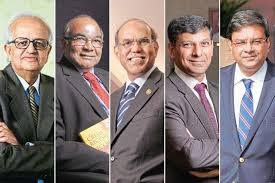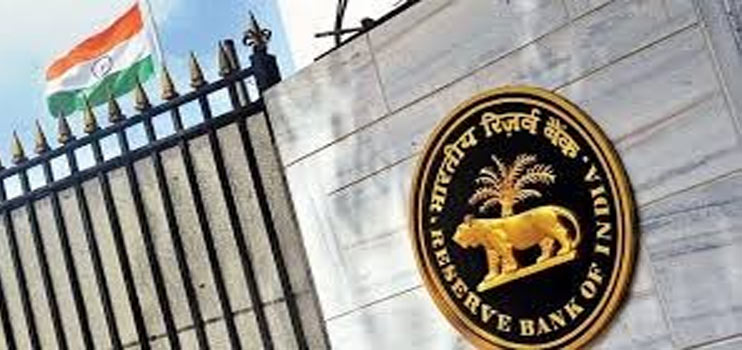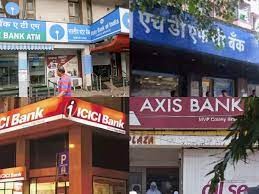RN Malhotra, governor of Reserve Bank of India (RBI) from February 4, 1985 to December 22, 1990, strongly opposed the VP Singh government’s loan-waiver programme in 1990.
He also did not like the idea of RBI employees celebrating Diwali, Ganesh Chaturthi, Christmas or any other religious festivals in office. A notification was issued to stop these practices since they were not in sync with the central bank’s secular character.
Malhotra’s wife, Anna, was passionate about gardening. At the RBI governor’s bungalow in Mumbai, one gardener’s job was to brief her every Sunday on the number of fruit the lime tree had borne! Malhotra and Anna’s love story is now part of RBI lore.
S Venkitaramanan, who succeeded Malhotra, was the first governor to own a Maruti 800. While using his official car, an Ambassador, he would often ask the driver to leave when he needed to meet someone and didn’t want him to know about the rendezvous.
In the thick of the 1991 balance of payments crisis, he approached the Bank of England and the Bank of Japan, but no one was willing to lend without collateral. Between July 4 and 18, 1991, the RBI pledged 46.91 tonnes of gold with the two central banks to raise $400 million.
His successor, C Rangarajan, pulled down the wall between banks and financial institutions. He also started freeing interest rates on deposits and loans.
He abolished ad hoc treasury bills and replaced them with the Ways and Means Advances scheme to accommodate temporary mismatches in government receipts and payments.
Rangarajan’s wife was very religious. She would host bhajans, kirtans and satsang at the governor’s bungalow almost every evening. When such sessions were on, she would repeatedly call up the governor’s office to enquire whether “Ranga” had left for home. Each time, she would get the same reply: “He is about to leave.”
When Bimal Jalan took on the mantle, the RBI was spending almost $1 billion a day to protect the local currency. Its foreign exchange reserves were at $25 billion. By the time Jalan left, the heap was more than three times higher, at $84 billion.
In August 1998, India raised $4.8 billion overseas through the Resurgent India Bonds, the first of its kind. The idea was to boost foreign exchange reserves. In October 2001, there was a repeat. This time, the India Millennium Deposit scheme raised $5.5 billion from non-resident Indians.
The East Asian crisis was one among many events that Jalan had to tackle. The Pokhran-II tests, a series of nuclear bomb tests carried out by India in May 1998, were one of them. The US imposed economic sanctions on India, and many other nations followed suit. The Gujarat earthquake of January 2001, which killed 12,300, was another.
Even today, people in the RBI are trying to figure out the real Jalan. A politician? A diplomat who could keep everybody happy? A statesman?
His ability to get to the core of an issue, cutting the flab, was immaculate. He would reach office at 9.30 am leave at 5 pm, come what may. He would watch movies in theatres (first day, first show) and eat out at restaurants across Mumbai.
Back in 1997, YV Reddy, as deputy governor, had caused panic in the foreign exchange market with a seemingly irresponsible comment on the rupee. On August 15, 1997, during his inaugural address at the XIth National Assembly of the Forex Association of India in Goa, he said, “There is a considerable discussion as to whether the rupee is overvalued or not. As per the REER [real effective exchange rate], it would certainly appear so, irrespective of the base chosen.”
That was a Friday. Next week, the local currency dropped to 37.50 a dollar from 35.75 before the speech. By December, it had dropped to 39.30 and by early January 1998, the rupee lost over 13 per cent against the dollar from the August level, slipping to 40.65.
Talking Rupee Down
This was the first time the central bank talked down the market. The RBI wanted to convey a message and Reddy was the messenger.
What he did as governor for the economy and how he saved India from being mauled by the 2008 global economic crisis through a series of measures taken in advance are well known.
He coined the term “financial inclusion” and introduced no-frills zero-balance accounts, which was reintroduced almost a decade later in the form of Pradhan Mantri Jan Dhan Yojana (PMJDY) in 2014.
D Subbarao succeeded Reddy, just about a week before the Lehman Brothers Holdings Inc went bust. Among other things, his regime at the RBI will be remembered for its relentless fight with the finance ministry for the central bank’s independence.
While delivering the 10th Nani A Palkhivala Memorial Lecture in August 2013, Subbarao first quoted a German chancellor, Gerhard Schroeder, who had once said, “I am often frustrated by the Bundesbank. But thank God, it exists.” Then, he made the famous comment: “I do hope finance minister (P) Chidambaram will one day say, ‘I am often frustrated by the Reserve Bank, so frustrated that I want to go for a walk, even if I have to walk alone. But thank God, the Reserve Bank exists’.”
He was referring to Chidambaram’s outburst in October 2012 when the RBI chose to keep its key policy rate unchanged to fight high inflation, a day after the finance minister unveiled the government’s fiscal consolidation road map.
“Growth is as much a challenge as inflation. If the government has to walk alone to face the challenge of growth, then we will walk alone,” an upset Chidambaram had said, reacting to the RBI’s policy review.
Lungi Dance
At his farewell function, organised at the governor’ bungalow, we watched him doing the lungi dance a la Shah Rukh Khan to the Honey Singh song in the 2013 Hindi movie Chennai Express. He doesn’t miss a single Khan-Kajol film.
Raghuram Rajan was appointed as an OSD at the central bank three weeks before he formally took over as governor on September 5, 2013.
In columnist Shobhaa De’s words, “The guy’s put ‘sex’ back into the limp Sensex.” But many blame Rajan for adding more calories by introducing samosa with tea and coffee at every internal meeting at the RBI. For Reddy, the preference was peanuts. Cashew nuts were the hot favourite till the early 1990s. Cashew nuts brought with them issues of cholesterol and were replaced by almonds, which were deemed healthier. Subbarao was partial towards walnuts.
No one can question the deftness with which Rajan handled the situation and his aggression in pushing the reforms agenda once the macroeconomic scenario got stable. Among his many policy moves, he opened up the banking sector, intensified competition, forced banks to start recognising bad assets and put the fear of God among corporate defaulters.
Lipstick on a Pig
Upset with the way bankers were handling bad loans, Rajan once said, “You can put lipstick on a pig, but that will not make the pig a princess.”
His term will be remembered for the asset quality review, or AQR, the first-of-its-kind inspection exercise that the central bank undertook and forced the commercial banks to come clean.
His successor, Urjit Patel, did not waver from the mission to clean up the mess of bad loans and inflation-fighting.
Despite the government’s nudge, Patel did not dilute his stand on taking power sector defaulters to the insolvency court. The government also wanted the RBI to have a relook at its rules for “prompt corrective action”. Slapped with this, 11 banks could not give fresh loans since the RBI felt that weak banks should not grow business till they became healthy and well-capitalised.
Under him, RBI’s “fight” for autonomy and the government’s periodic iteration of “respect” for it continued till it reached a level where the government used Section 7 of the RBI Act to “direct” the central bank on certain things. Section 7 gives power to the government to “give such directions to the Bank as it may, after consultation with the governor of the Bank, consider necessary in the public interest”. The government had sent three notes to the RBI under this Section.
The government also wanted the RBI to transfer more from its surpluses to help it bridge the fiscal deficit.
Just three days before a crucial RBI board meeting in December 2018, Patel resigned, citing personal reasons.
Raid on RBI Balance Sheet
What was the trigger for the departure? There were many triggers, but the most potent one was probably the raid on the central bank’s balance sheet.
After two economists, the RBI has an IAS man again at its helm. Shaktikanta Das is the first governor after Venkitaraman who has not studied economics. So what? All of us are witness to what he has been doing. While analysts try to guess the undertone of the monetary policy from the colour of the tie he wears, Das is the only governor among the nine I have discussed in this column who keeps a mustache.
This column first appeared in Business Standard.
The writer of this column writes Banker’s Trust every Monday in Business Standard.
Latest book Roller Coaster: An Affair with Banking
Twitter: TamalBandyo
Website: https://bankerstrust



